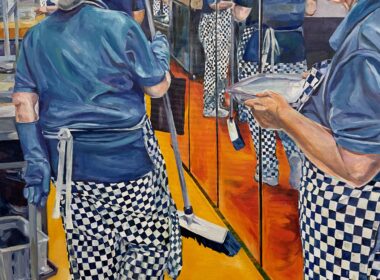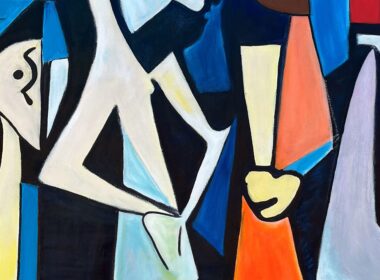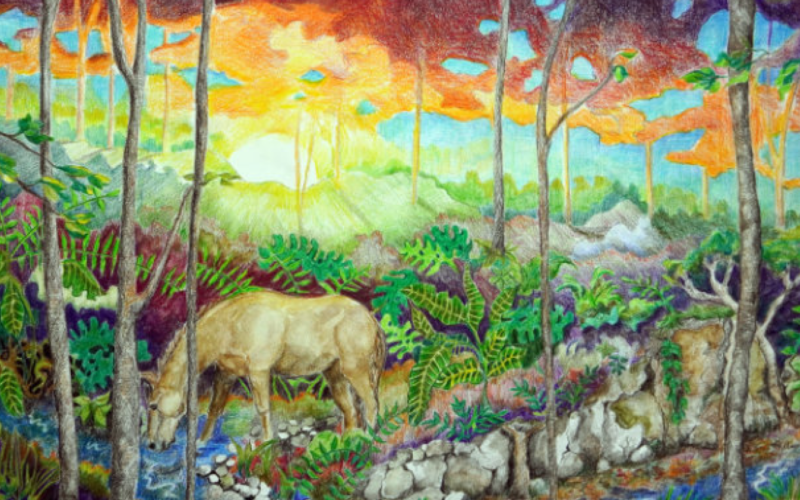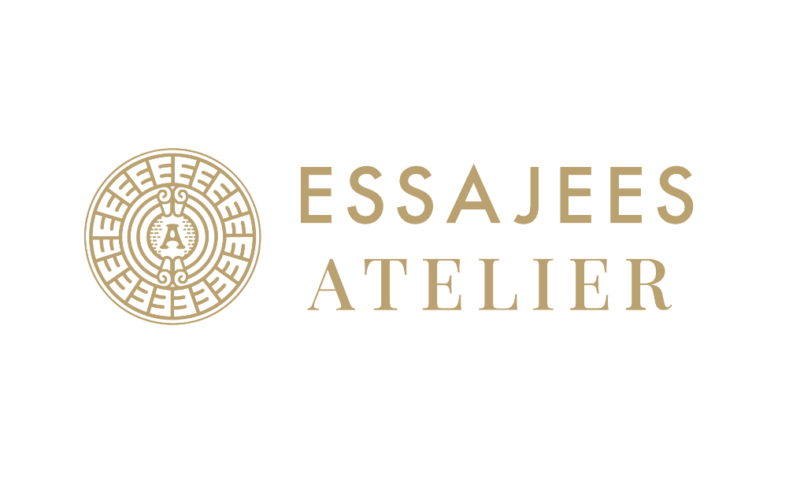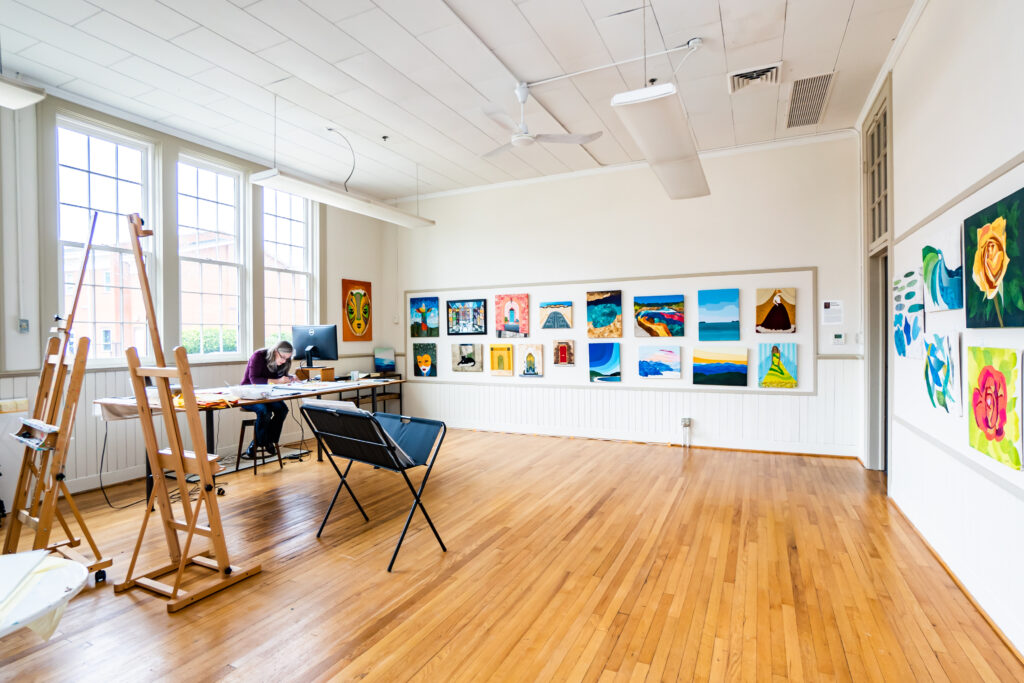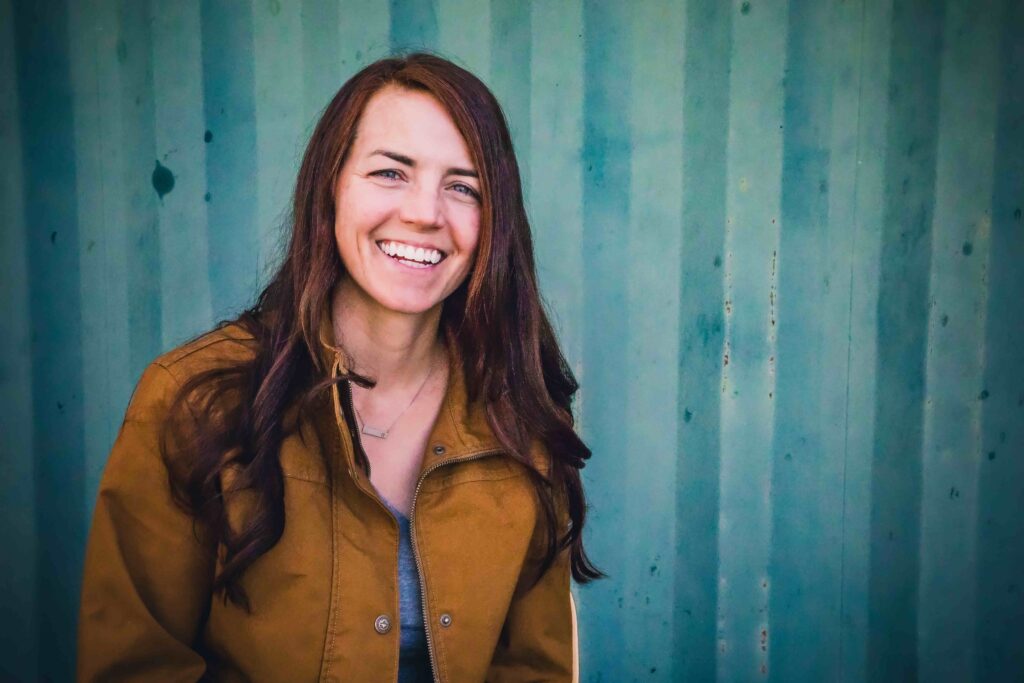
In Studio w/ Marryam Moma: Studio that promotes growth, experimentation, and a deep connection.
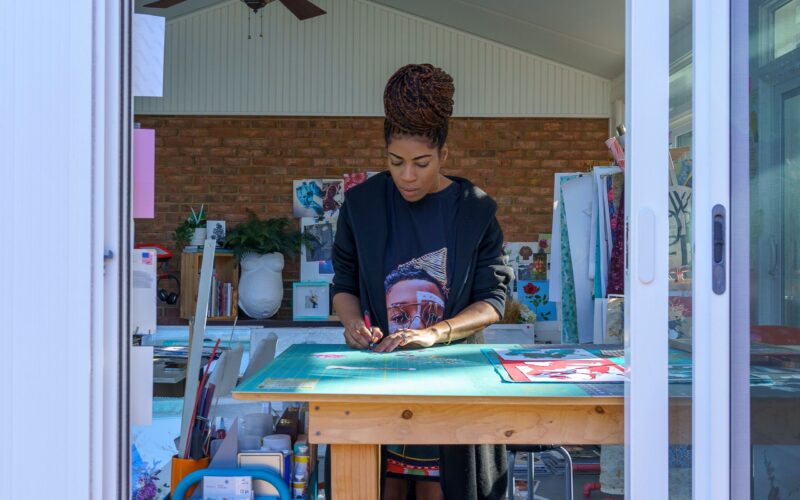

Tanzanian-Nigerian collage artist Marryam Moma intricately combines repurposed archival paper and mixed media, to reconstruct vibrant narratives, delving into the complexities of the Black experience. Celebrating joy while challenging societal perceptions, Moma’s work is a masterful tapestry of multidimensional stories. Her analog collages grace international corporate collections like Microsoft, Google, and Starbucks. Her global impact extends to TV programs and prestigious magazines.

In a virtual visit to the studio of the artist Marryam Moma, a collage artist whose work presents a fresh and reimagined Black life community. Her studio, the Glassbox, located at the back of her residence, is where she reimagines and reinvents her Black life artwork. In this interview, she shares how she sets up her studio, what a typical day looks like for her, her past year’s studio practice, and more.
1. How are you setting up your studio for the New Year?
1. Arrange 2. Organize 3. Set up 4. Prepare 5. Establish and complete A great example of this process is that I am arranging my collage studio by decluttering my workspace, updating my art supplies, creating a new vision board for inspiration, scheduling regular creative sessions, and setting up a dedicated area for displaying finished pieces.
2. What is one ritual or thing that you do at the beginning of the New Year in your studio?
I strategically outline my upcoming 12 months, allocating specific time slots in my calendar for various projects, including personal passions and commissioned work. Prioritizing self-care and quality time with loved ones is equally essential for maintaining balance and fostering personal well-being amidst a demanding schedule.
I chose to escape the rigidity of my formal architecture background in favor of building a creative practice that highlights the experiences of people like me.
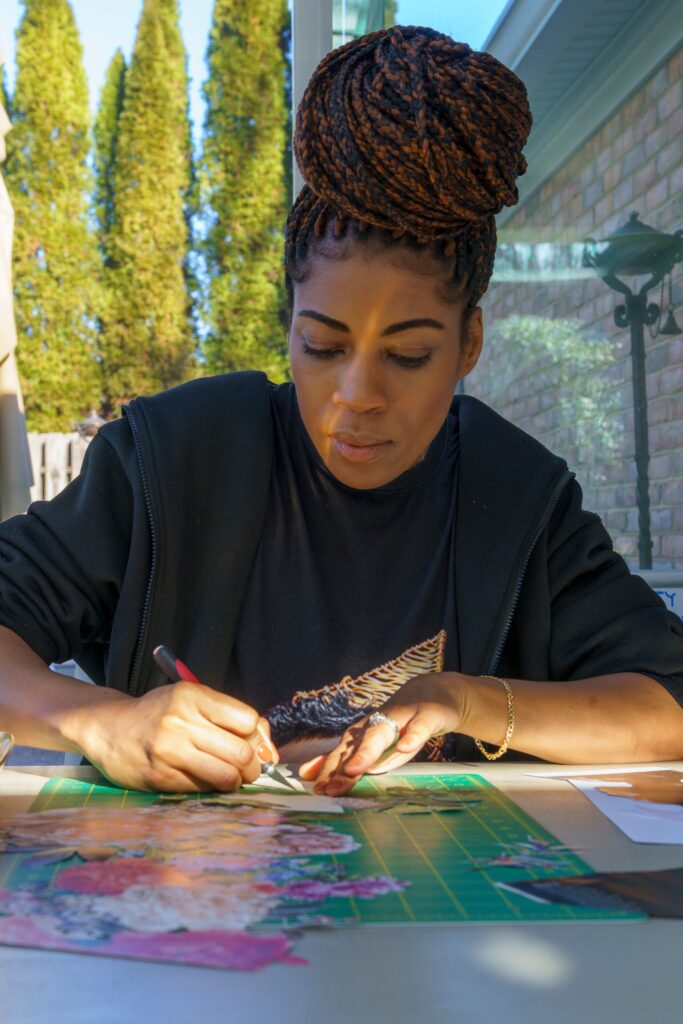
3. Looking at last year what is the work that you are most proud of?
I take immense pride in my inaugural solo exhibition, ICONoclasts, in Atlanta from July 28 to September 8. Focused on Black individuals whose revolutionary contributions resonated amid adversity, the project aimed to honor their impact and inspire others in my community to embody everyday icons in their respective spheres.
4. What does a typical day in the studio look like for you?
A typical day in the studio begins with organizing and preparing materials for new or ongoing work. I may spend time brainstorming new visual stories and ideas or working on multiple pieces simultaneously. Experimentation with different textures and compositions is important. Overall, it involves a balance of creativity, focus, and occasional breaks for reflection and inspiration.

5. Could you share the studio spaces you work from? Be it your kitchen table or a fancy studio? How has your creative process evolved?
I operate from my studio, the Glassbox, a moderately sized sunroom located at the back of my residence, nestled within the garden my husband and I maintain. In the past, I worked in small, confined spaces within my family home. The presence of the studio has been transformative, allowing my creative process to evolve significantly. While I initially relied on inspiration to initiate work, I have since adopted a more structured approach, emphasizing consistent practice, experimentation with new techniques, and drawing inspiration from a variety of sources. This transition has rendered my creative process more disciplined and productive.
I depict Black life reframed and reimagined, experiences and highlight Black joy through a multidimensional use of cutouts, layered paper, acrylic paints, gold leaf and shiny mixed media.
6. How are you setting up the tone for your studio practice this new year?
In setting up the tone for my studio practice this new year, I am prioritizing intentionality and mindfulness. I aim to create a space that fosters creativity, focus, and productivity. This involves decluttering and organizing my studio to ensure a conducive environment for exploration and creation. Additionally, I am integrating mindful practices such as meditation and setting specific creative goals to guide my work throughout the year. Embracing a sense of openness to new ideas and techniques, I am committed to nurturing a studio atmosphere that promotes growth, experimentation, and a deep connection with my artistic process.
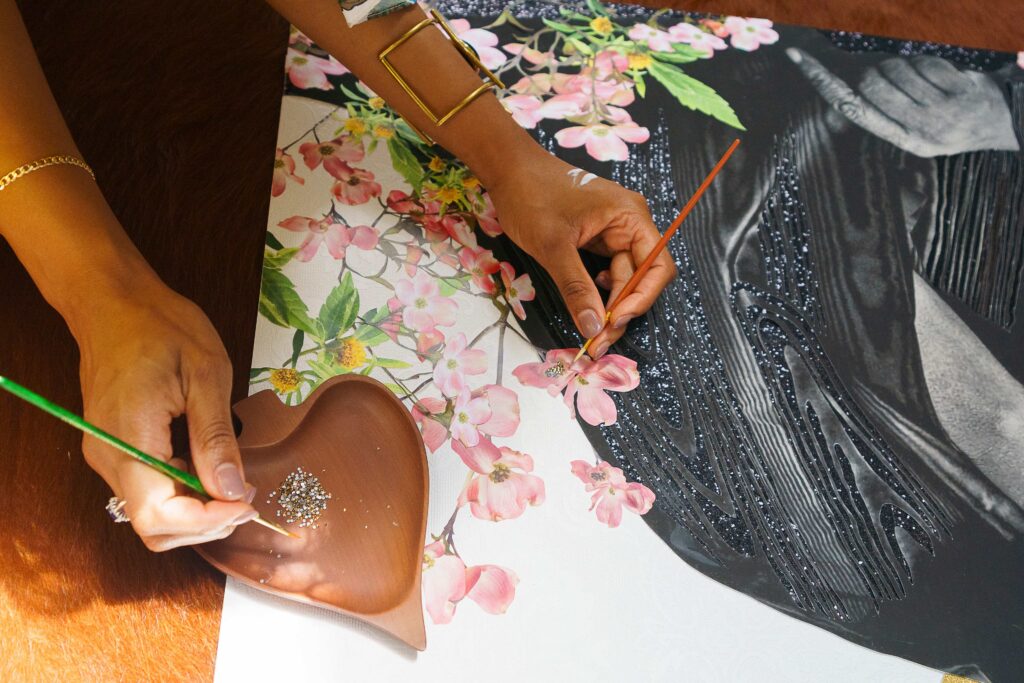
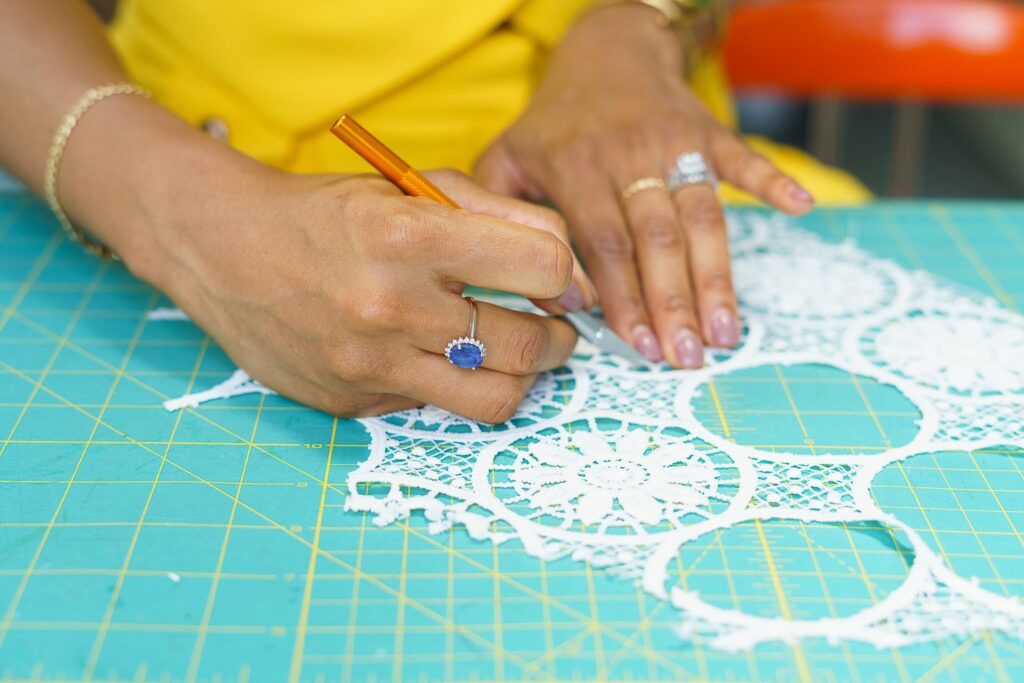
7. A favorite book you like to read?
While I don’t have a specific favorite book, I tend to immerse myself in literature related to the themes I’m exploring for my art projects. This practice allows me to infuse rich details into my work during creative sessions. For instance, when working on ICONoclasts, I delved into extensive research, absorbing the life stories, achievements, and adversities of the iconic figures and subjects I selected for the project. This in-depth understanding greatly enriched the creative process and added depth to my artistic expression. I am currently reading Atomic Habits by James Clear, which is not related to any specific project at this time, but will help shape how I show up in my studio practice with consistency.
8. Can we sneak in your current artwork on your table?
I am currently finishing collage works on wood for a “Small Works” exhibition opening in February 2024, in Atlanta, GA.
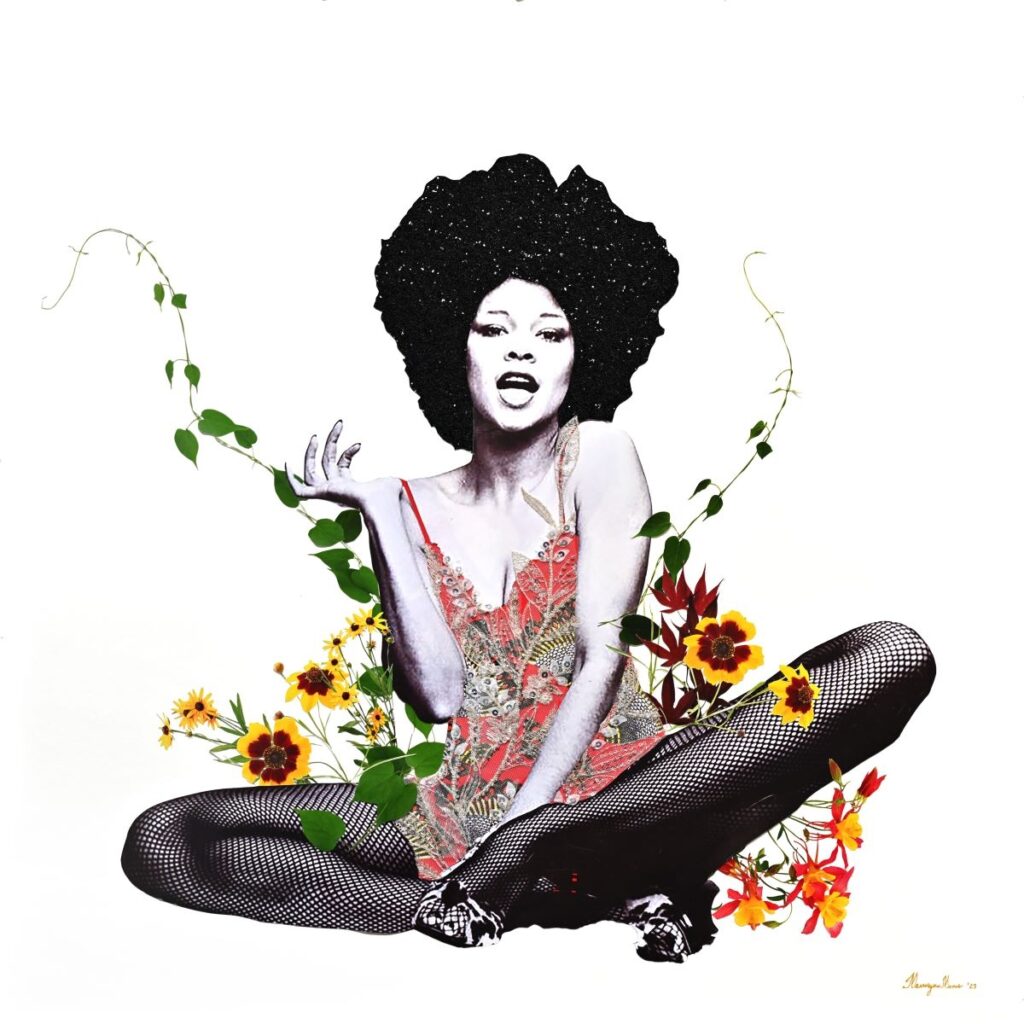

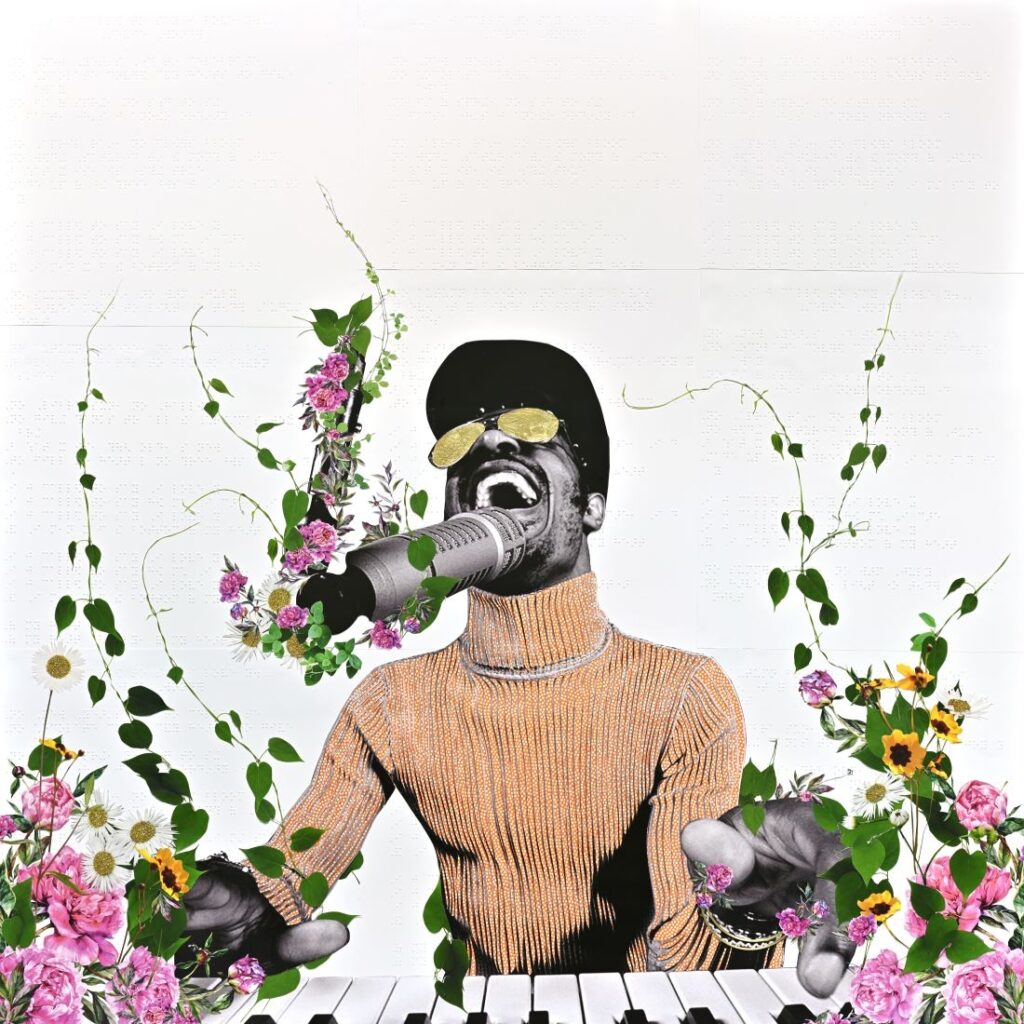
9. How do you take your studio practice beyond your studio?
Taking my collage studio practice beyond the confines of my studio involves engaging with the world around me in a way that influences and enriches my creative process. This could include seeking inspiration from nature, architecture, street art, or other external sources. Additionally, I may participate in community art projects, collaborate with local artists, or attend art events and exhibitions to expand my artistic horizons. Sharing my work through social media, participating in art fairs, or organizing public showcases are also ways to extend the reach of my collage practice beyond the studio, allowing me to connect with a wider audience and receive valuable feedback. Ultimately, integrating my practice into the broader artistic community and drawing inspiration from diverse experiences are crucial in taking my collage studio practice beyond its physical space.
Contrasting textures, luxurious materials, rich colors and a careful selection of apparently disparate elements come together in my art to spark conversations about the multilayered experiences of Black bodies.
10. How would you describe the year 2023 for your studio practice?
In 2023, my studio practice evolved and expanded as I explored new creative avenues, experimented with diverse techniques, and sought deeper connections within the artistic community through collaborations and idea exchanges. I ventured into bold projects that expanded the boundaries of traditional collage art, integrating multimedia elements and embracing sustainability through eco-friendly materials and processes. I also participated in prestigious exhibitions, art residencies, and the publication of several art books to elevate the visibility of my work. Engaging with digital platforms, I broadened my audience globally and explored new opportunities for showcasing and promoting my art. Furthermore, my involvement in community engagement, mentorship roles, and workshops contributed to the growth of emerging artists. Overall, 2023 was a transformative phase for my studio practice, characterized by innovation, collaboration, and a commitment to authenticity and sustainability. I embraced the challenges and opportunities, nurturing my creative journey and making a meaningful impact through my art.
11. How do you overcome a creative block and let the creative juices flow?
To overcome a creative block, I explore new surroundings, engage in physical activities, and seek inspiration from different art forms. I cultivate a mindset of curiosity and experimentation, allowing myself to play and make mistakes. Additionally, taking breaks, practicing mindfulness, and seeking feedback from peers often help rejuvenate my creative flow.

12. The first piece of art you made while working here in this studio.
My recollection is a bit hazy, considering the span of time, but over the four years I’ve spent in this studio, one notable project comes to mind. Upon my initial move, I brought with me several collages I had been working on, originating from my family home. A standout moment was the creation of three commissioned collages for Popular Science Magazine during the winter of 2020. These collages were specifically focused on instilling hope within the Black communities of St. James Parish, Louisiana. This community was grappling with a dire situation—increased cancer rates attributed to environmental pollution stemming from major plastics manufacturing companies that had established themselves within the area. The backdrop of the COVID pandemic heightened the urgency of the issue, and the region acquired the ominous nickname “Cancer Alley” due to the elevated cancer-related death rates. The commissioned pieces became a part of an article titled “Voice of Their Ancestors,” skillfully penned by Megan Cannon. It’s a project that remains etched in my memory, not just for its artistic significance but for its profound resonance with the ongoing struggles and narratives within those communities.
Social Media Details of Marryam Moma







